 Although it was announced as part of the forthcoming Palm Treo 680 smartphone package, Google has already made its Google Maps application available for free download.
Although it was announced as part of the forthcoming Palm Treo 680 smartphone package, Google has already made its Google Maps application available for free download.
Described by Google as being, “months in the making,” the company describes the 425k download as “the fastest, slickest version yet” of their mobile-optimised Google Maps application, offering real-time traffic reports, detailed directions, integrated search results (search for cafes/bars etc and get addresses and the option to call them with one click), fast downloading detailed, draggable maps and even satellite imagery.
Installation
Installing the Google Maps was easy enough, we just pointed our Treo browser to google.com/gmm and downloaded the program over the air. Users can also download the program from to their PC from http://www.google.com/gmm/treo and then hotsync the file over to their handheld in the usual way.
We ran Google Maps from our SD card with no problems.
Looking up locations
Loading up the program, we were prompted to type in an address (or ZIP code, postal address, latitude and longitude, intersection etc) and we were astonished by the speed that the map appeared on screen – even though we were connecting via GPRS. This baby is fast!
The maps download as small, separate tiles, so only new segments need to be downloaded as you were scroll across pages using the Treo’s five-way controller, or by dragging the map across the screen.
Overlaid, opaque zoom in/out buttons let you decide the level of detail, and a ‘find nearby business’ menu gives you the option to search for local hotels, cafes, bars etc with the results appearing onscreen as numbered markers.
 Clicking on an icon provides more address information and a button to phone them up, as well the ability to get turn by turn driving directions to and from any given point.
Clicking on an icon provides more address information and a button to phone them up, as well the ability to get turn by turn driving directions to and from any given point.
Best of all, downloaded maps are stored locally, so you can look up the area you’re visiting and have the map ready for viewing – even if you can’t connect to the web.
A minor niggle is that there’s no option to store downloaded data on to the Treo’s memory card, so stored maps burn up precious internal memory, but you can at least chose to delete all data on program exit.
Traffic updates
With Google Maps you can call up comprehensive information on traffic conditions in more than 30 U.S. major metropolitan areas (with partial information available for other states) with the driving directions offering traffic estimates to avoid congestion.
Highway traffic speeds are represented by different colour overlays (green for traffic flowing at over 50mph, Yellow for 26-50mph etc), and you can download satellite maps for onscreen maps.
You can search and view UK locations, but there’s currently no local business or traffic information available, although Google says it’s working to increase availability.
Conclusion
Google Maps is a truly remarkable product that adds near GPS-like functionality to the entire range of modern Palm OS Treos (700p, 680, 650 and even the venerable Treo 600 smartphone) – and all for nothing!
Of course, it won’t be able to tell you where you are, but so long as you can find a street sign, you’ll be able to nail your location, download local maps, locate and call up nearby shops, businesses and bars and even get traffic updates and satellite images.
It’s easily one of the best products we’ve ever reviewed for a Palm phone – any smartphone, in fact – and it’s a ‘must have’ application for map fans, travellers, amblers and business users alike. And it’s free, Goddammit!
Features: 90%
Ease of use: 90%
Value For Money: 95%
Overall: 95%
 UK Internet shoppers are spending up to 50 per cent more on electrical goods than they would on the High Street, according to new research.
UK Internet shoppers are spending up to 50 per cent more on electrical goods than they would on the High Street, according to new research.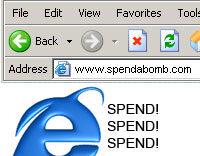 Not surprisingly, popular consumer products like hard drives and mp3 players have been big movers, but GFK also noted that consumers are increasingly shelling out for more diverse products online, such as bread makers and dishwashers.
Not surprisingly, popular consumer products like hard drives and mp3 players have been big movers, but GFK also noted that consumers are increasingly shelling out for more diverse products online, such as bread makers and dishwashers.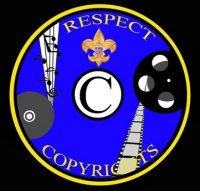 Coming straight from the you-must-be-having-a-laugh folder, news reaches us that the Los Angeles Scout group is introducing a new merit award — the Respecting Copyright Patch. We kid you not.
Coming straight from the you-must-be-having-a-laugh folder, news reaches us that the Los Angeles Scout group is introducing a new merit award — the Respecting Copyright Patch. We kid you not.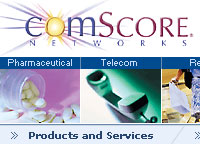 European mobile phone users are far more likely to use their handsets to access the web than their US counterparts, according to a new comScore Networks study.
European mobile phone users are far more likely to use their handsets to access the web than their US counterparts, according to a new comScore Networks study.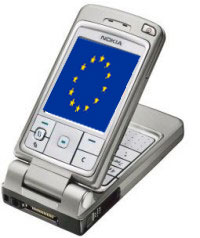 Portal sites were the most popular destinations for mobile surfers, with Google, Yahoo! and MSN leading the way, with branded Web sites set up by the phone operators, such as Vodafone, o2 and T-Mobile also proving a hit.
Portal sites were the most popular destinations for mobile surfers, with Google, Yahoo! and MSN leading the way, with branded Web sites set up by the phone operators, such as Vodafone, o2 and T-Mobile also proving a hit. As the smartphone market continues to explode, Microsoft has revealed its bullish ambitions to keep on doubling sales, year on year.
As the smartphone market continues to explode, Microsoft has revealed its bullish ambitions to keep on doubling sales, year on year.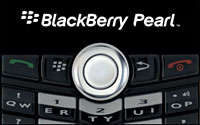 According to research firm
According to research firm 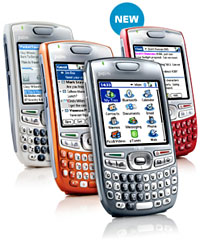 It looks like the smartphone market is going to heat up in coming months too, with Research In Motion’s new
It looks like the smartphone market is going to heat up in coming months too, with Research In Motion’s new 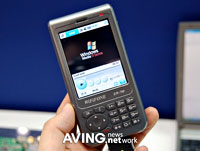 Currently causing something of a stir on the floor of the Korea Electronics Show is the WiFiFone EW-700, a Wi-Fi-enabled VoIP smartphone running Windows Mobile.
Currently causing something of a stir on the floor of the Korea Electronics Show is the WiFiFone EW-700, a Wi-Fi-enabled VoIP smartphone running Windows Mobile.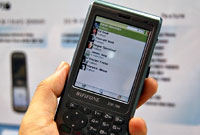 The EW-700, looks a fairly plain, clunky beast too – in fact the photos we’ve seen have something of a pre-production air to them – but it’s not short of features.
The EW-700, looks a fairly plain, clunky beast too – in fact the photos we’ve seen have something of a pre-production air to them – but it’s not short of features.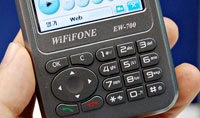 We’re yet to get full specs either, but the screen looks like a 320 x 240 pixels jobbie to us, and there’s also a 2-megapixel camera with camcorder function onboard, a voice recorder, hardware MPEG engine offering full frame video and Wi-Fi and infrared connectivity.
We’re yet to get full specs either, but the screen looks like a 320 x 240 pixels jobbie to us, and there’s also a 2-megapixel camera with camcorder function onboard, a voice recorder, hardware MPEG engine offering full frame video and Wi-Fi and infrared connectivity.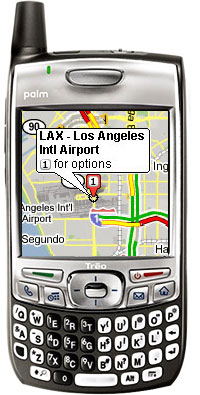 Although it was announced as part of the forthcoming Palm Treo 680 smartphone package, Google has already made its Google Maps application available for free download.
Although it was announced as part of the forthcoming Palm Treo 680 smartphone package, Google has already made its Google Maps application available for free download.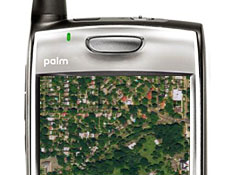 Clicking on an icon provides more address information and a button to phone them up, as well the ability to get turn by turn driving directions to and from any given point.
Clicking on an icon provides more address information and a button to phone them up, as well the ability to get turn by turn driving directions to and from any given point.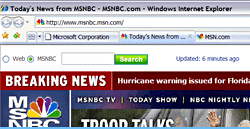 Microsoft have made their latest version of their Web browser, Internet Explorer 7, available for download.
Microsoft have made their latest version of their Web browser, Internet Explorer 7, available for download.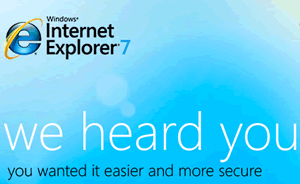 Feature Catchup
Feature Catchup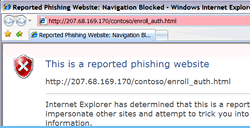 Phishing warning
Phishing warning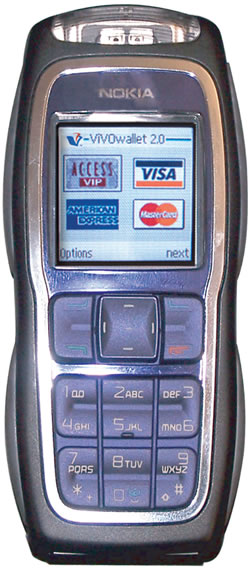 An NFC payment system is on trial in Amsterdam allowing people taking part to make purchases using their mobile phone.
An NFC payment system is on trial in Amsterdam allowing people taking part to make purchases using their mobile phone.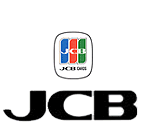 Approximately 100 selected JCB cardholders are now enjoying fast, easy, and convenient payments with Mobile J/Speedy at selected merchants, where they used to pay by cash.
Approximately 100 selected JCB cardholders are now enjoying fast, easy, and convenient payments with Mobile J/Speedy at selected merchants, where they used to pay by cash. Now there’s been much talk of the death of traditional linear TV and it appears that the demise of the traditional broadcasters in the UK is taking a little longer than some expected. Perhaps hidden behind the excitement of Google buying YouTube and the UK start of two further channels on the Freeview platform; Five US and Five Life is a channel that could be the harbinger of how TV channels in the future will launch.
Now there’s been much talk of the death of traditional linear TV and it appears that the demise of the traditional broadcasters in the UK is taking a little longer than some expected. Perhaps hidden behind the excitement of Google buying YouTube and the UK start of two further channels on the Freeview platform; Five US and Five Life is a channel that could be the harbinger of how TV channels in the future will launch.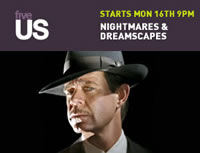 The relatively innocuous content is lodged somewhere between the fashionable haphazard Zeitgeist of UGC (User generated Content) and the bland professionalism of the big broadcasters, time will tell if there’s a hole there that this will fill.
The relatively innocuous content is lodged somewhere between the fashionable haphazard Zeitgeist of UGC (User generated Content) and the bland professionalism of the big broadcasters, time will tell if there’s a hole there that this will fill.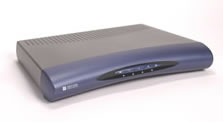 Over the last ten years, Motorola has moved from the first commercial digital STB to shipping fifty million digital STBs.
Over the last ten years, Motorola has moved from the first commercial digital STB to shipping fifty million digital STBs.